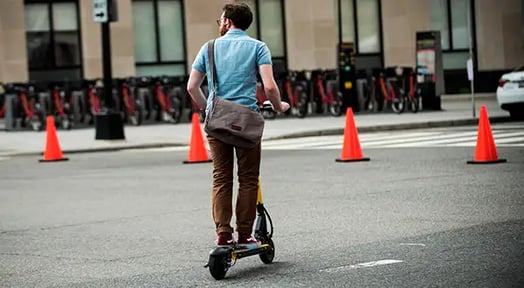ERIC BARADAT/AFP/Getty Images

People in cargo vans have been burning rubber every night, picking up dead micro-mobility vehicles (scooters, e-bikes, etc.) and charging them so they’re ready to rip the next day. Lime calls these freelance contractors “juicers” — and to that we say, well-played, Lime. Well-played.
Some juicers have reported earning up to $50 an hour. But, as The New York Times illustrates, the system has flaws — for both the contractors trying to make ends meet and the companies deploying them.
Get juiced
Lime pays its juicers $3 to $10 per each scooter collected, rejuiced, and returned to the wild. While that seems like chump change in isolation, some scooter scavengers can make up to $160 a day — but it’s not always easy.
With over 37k scooters and e-bikes in Los Angeles alone, drivers are often met with critical-thinking obstacles (a dead scooter’s behind a locked gate, what you do?), hoarders (cheaters who collect scooters before they’re posted in the app), and repairs (AKA an extra trip to a “fix-it location”) that eat into their livelihood. Because, especially in this case, time is money.
It’s also tricky for companies to employ juicers. Recent research found that companies were generating $2.43 per mile in revenue in 2019 but spending $2.55 per mile to keep the scooters running.
Then there’s the environmental contradiction…
A big reason for this whole scooter assault is to cut down on carbon emissions. But a recent study found that the average juicer drives between half a mile and 2.5 miles per scooter — accounting for 40% of a scoot’s total carbon footprint.

